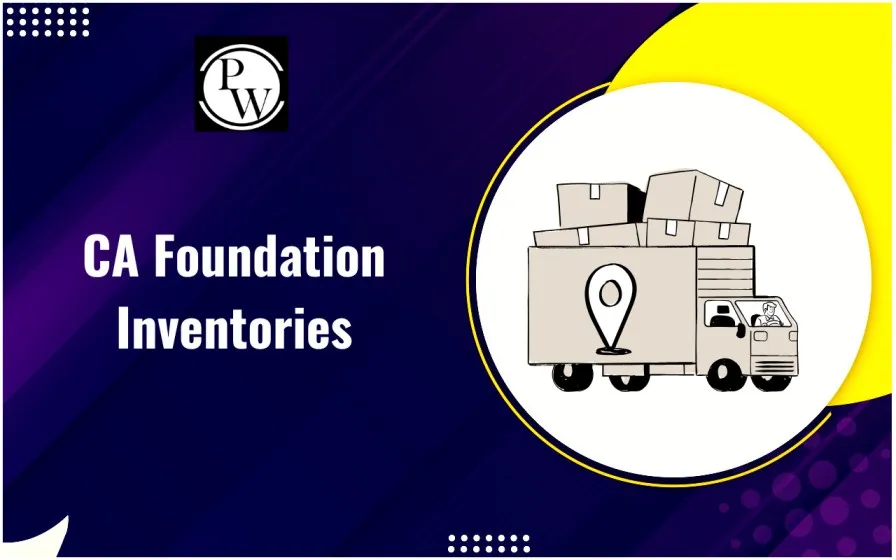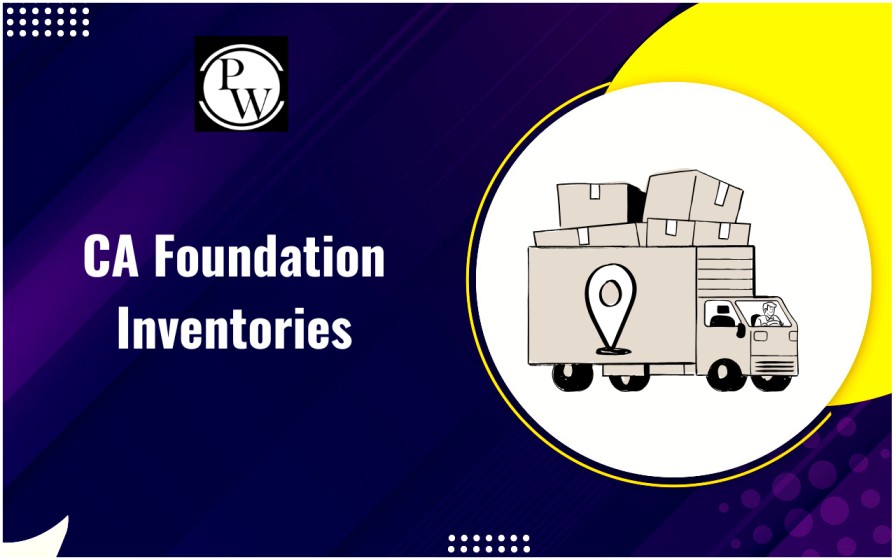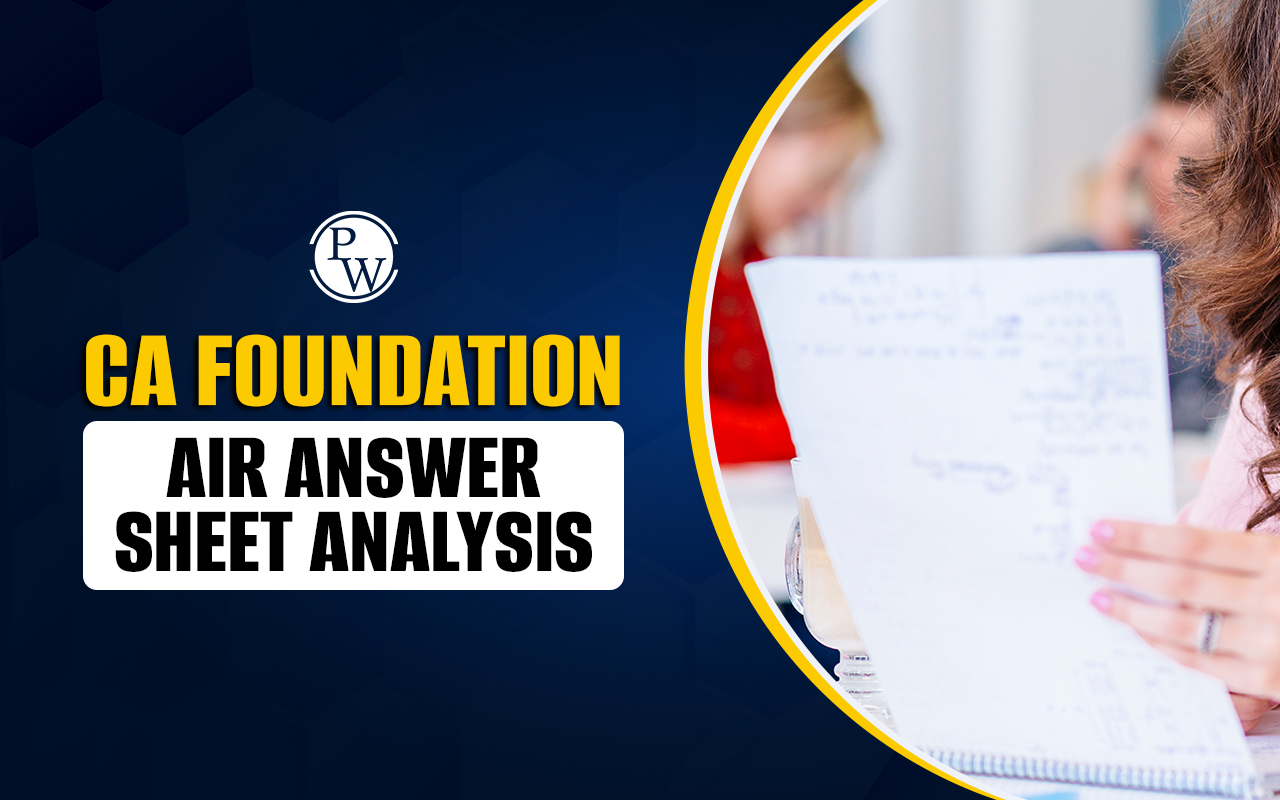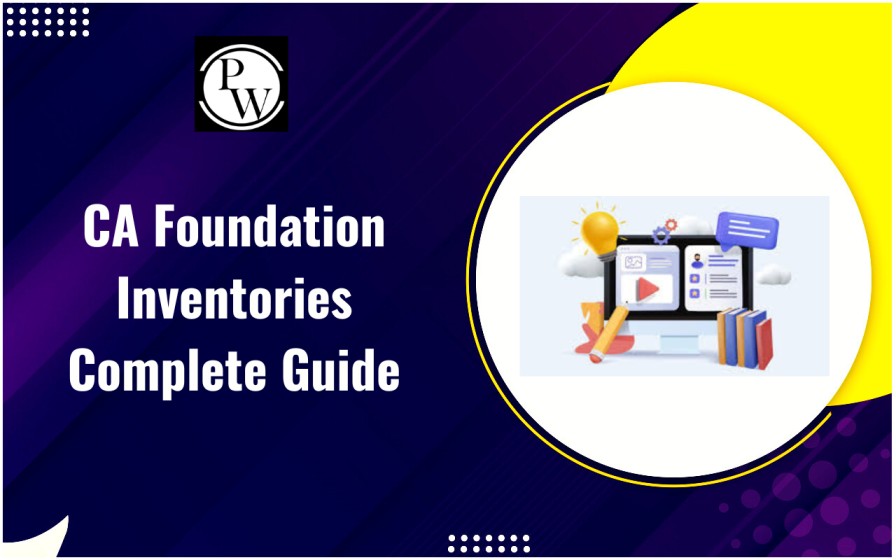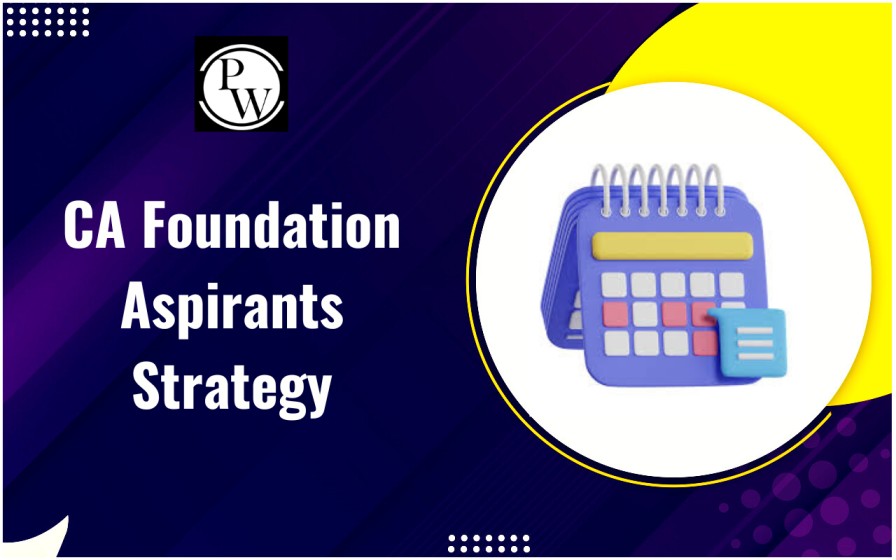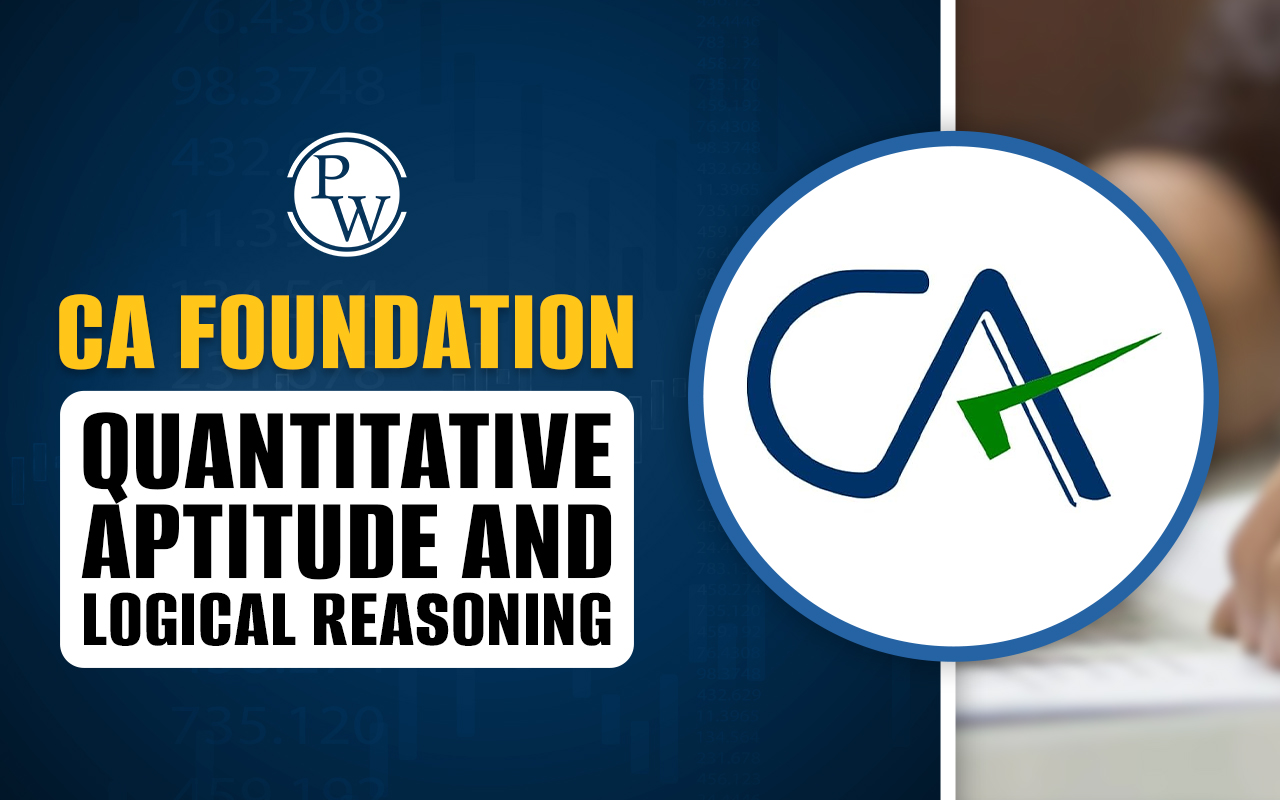
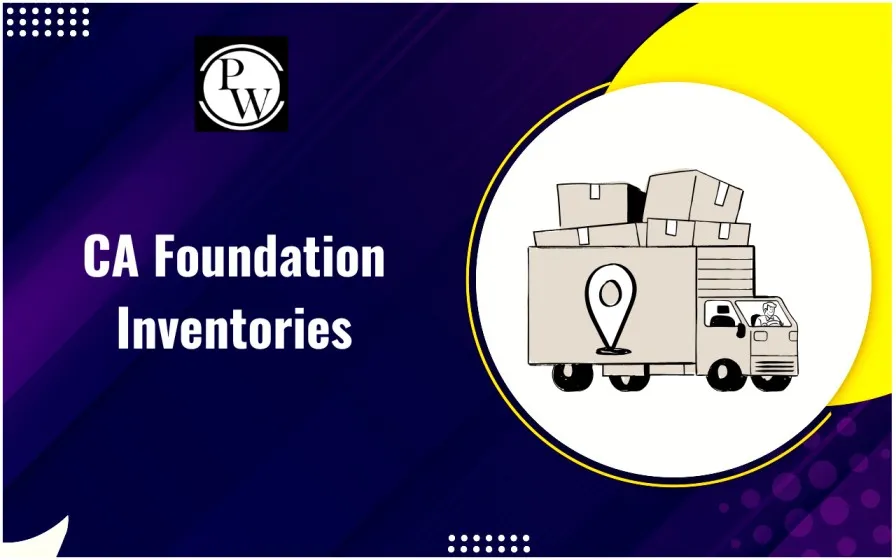
CA Foundation Inventories: Understanding CA Foundation Inventories is a crucial part of mastering fundamental accounting principles. This subject establishes the foundation for comprehending how products are assessed and presented in financial reports. In the examination, the CA Foundation’s inventories chapter often features questions that assess both theoretical understanding and practical application, resulting in a high-scoring segment when studied thoroughly.
Understanding the meaning, techniques, and equations of inventory valuation allows students to tackle related issues with confidence, enhance their exam results, and establish a solid conceptual base for higher-level accounting studies.
What are CA Foundation Inventories?
Inventories refer to the items that a company possesses for the purpose of selling or producing other goods. In basic terms, these are the goods a retailer or producer has prepared for buyers. CA Foundation Inventories include:
Finished Goods: Items prepared for sale
Work-in-progress(WIP): Items that are currently under production
Raw Materials: Materials utilized in the production of goods
Consumables: Minor items such as oil or replacement parts required for machinery
All four types can be found in manufacturing companies. In trading companies, only completed products are stored.
Why is Inventory Valuation Important?
Inventory valuation involves assessing the accurate monetary value of the items a company possesses at the conclusion of an accounting period. This assessment is important because it influences various significant factors:
Profit Computation: The ending inventory has a direct impact on the Cost of Goods Sold(COGS). If the inventory value is noted as excessively high or low, it will result in a faculty profit or loss calculation.
Accuracy of the Balance Sheet: Inventory frequently constitutes a major portion of a company’s current assets. A wrong figure can provide a distorted view of the company’s financial status and liquidity.
Business Choice: Precise inventory figures assist management in planning upcoming acquisitions, sales, and pricing decisions. It guarantees that the business avoids both stock shortages and surplus inventory.
The ICAI inventory valuation approaches guarantee that the assessment is performed fairly and consistently, avoiding the overstatement or understatement of inventory value that might mislead stakeholders.
Basis of Inventory Valuation
In accounting, CA Foundation inventories are valued at the lower of cost or net realizable value(NRV)
Cost: Includes purchase price, taxes, freight, and production costs.
NRV: Estimated selling price minus costs to complete and sell the product
Inventory Recording Systems
There are two ways to record CA Foundation Inventories:
Periodic Inventory System
Inventory is assessed at the conclusion of the accounting period to ascertain the true amount remaining on hand. The physical inventory confirms precision, as the periodic system doesn’t monitor inventory daily. The Cost of Goods Sold(COGS) is calculated with a simple formula that modifies purchases by considering the difference between opening and closing stock:
COGS= Initial Inventory+ Acquisitions-Final Inventory
For example, if a company begins with an initial inventory of Rs 5000, purchases goods worth Rs 15,000, and ends with a closing inventory of Rs 4,000, the COGS will be calculated as Rs 5000+ Rs 15,000 - Rs 4,000 = Rs 16,000
Perpetual Inventory System
Inventory is refreshed each time items are purchased are sold. This indicates that all transactions, including purchases, sales, or returns, are logged immediately in the records, offering a current inventory status.
It provides an immediate inventory value, assisting companies in accurately determining their stock level at any given time, minimizing mistakes, and preventing both shortages and excess inventory.
Methods of Inventory Valuation
The ICAI Inventory Valuation Methods include different ways to calculate the cost:
FIFO Method
FIFO(First In First Out) indicates that the items acquired or created first are the ones sold or utilized first, while the most recent products stay in inventory. This approach presumes a natural movement of products, particularly for perishable or time-critical products. Consequently, the ending inventory consists of the latest acquisition or production runs, showcasing the newest cost prices and offering a more up-to-date assessment of the inventory value
For example, if 100 units are purchased at Rs 10 and another 100 at Rs 12, FIFO indicates that the remaining stock originates from the Rs 12 batch
Weighted Average Method
FIFO and Weighted Average in Accounting are both common methods. In the weighted average method, we calculate an average cost per unit by dividing the total cost of goods available by the total units available. This approach spreads out the price differences across all units, making it simpler to manage fluctuating purchase prices. For example, if 100 units are purchased at Rs 10 each and 50 units are purchased at Rs 12 each, the total cost is Rs 1000+ Rs 600= Rs 1600, and the total units is 150. The weighted average cost per unit would be Rs 1,600 ÷ 150= 10.67 per unit
Specific Identification Method
This approach is applied when items are distinctive, like cars, jewelry, or art. As each item has a unique price, every unit is monitored and assessed separately instead of applying an average or batch cost. For example, if a jeweler purchases three rings costing Rs 5,000, Rs 6,000, and Rs 7,000 respectively, the closing stock value is determined by simply summing the precise cost of the leftover rings, ensuring the valuation is precise for each distinct item.
Adjusted Selling Price Method
Cost is determined by deducting the anticipated profit margin and any selling costs from the ultimate selling price. This indicates that we begin with the selling price of the product and subtract the estimated profit, along with other expenses, to determine the approximate original cost of the inventory item.
How to Calculate the Cost of Inventory?
Students often ask, How to calculate cost of inventory? To calculate it correctly, follow these expanded steps:
-
Identify total purchase price: Add up the cost of all units bought.
-
Add extra costs: Include freight, duties, and direct production costs.
-
Remove abnormal expenses: Exclude abnormal losses or unnecessary storage costs.
-
Choose a method: Apply a method such as FIFO or weighted average to find the cost per unit.
-
Calculate total stock value: Multiply the units left by the chosen cost per unit.
-
Compare with NRV: Check if the Net Realizable Value is lower than the cost. If yes, use NRV as the inventory value.
Example: Suppose a shop buys 50 units at Rs 10 each and 30 units at Rs 12 each. If 40 units remain:
-
Total cost of 50 units = Rs 500, cost of 30 units = Rs 360
-
Using FIFO, the 40 units left are 10 units at Rs 10(Rs 100) and 30 units at Rs 12(Rs 360)
-
Total Closing Stock = Rs 460. If NRV per unit is Rs 11, the NRV of 40 units is Rs 440, so the inventory is valued at Rs 440
Formulas Used in CA Foundation Inventories
Here are some common formulas from the CA Foundation Inventories Chapter:
-
COGS = Opening Stock + Purchases - Closing Stock
-
Closing Stock = Units Left × Cost Per Unit
-
NRV = Estimated Selling Price - Selling Expenses
Understanding CA Foundation Inventories is easy if you comprehend the concepts and apply the techniques. The ICAI Inventory Valuation Techniques, such as FIFO and weighted average, will assist in addressing the majority of exam queries. Continue reviewing the formulas and concentrate on calculating inventory costs with illustrations.
CA Foundation Inventory FAQs
What is the meaning of CA Foundation inventories?
Which inventory valuation methods are taught in CA Foundation?
Why is inventory valuation important in accounting?
What is the difference between periodic and perpetual inventory systems?

